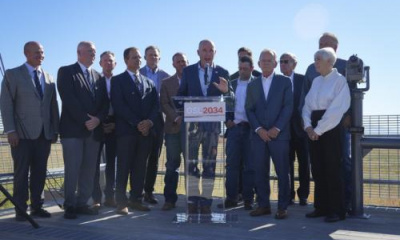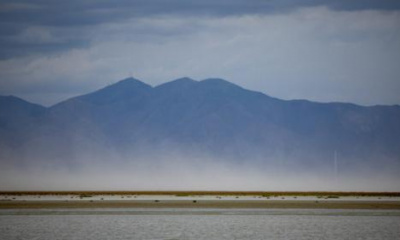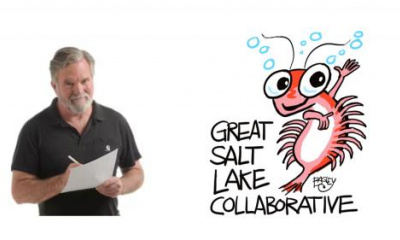The lake is at its lowest level on record and today holds half its historic average
Over the past year, Salt Lake Tribune reporters and photographers have written about the economic and environmental impacts of our shrinking Great Salt Lake.
We have invested in stunning drone photography and highlighted impacts to west-side communities and east-bench ski resorts.
We even drew new maps of the Great Salt Lake so our presentation was more accurate (read: The lake got smaller).
This is because we’ve hit a critical point: The lake is at its lowest level on record and today holds half its historic average. Its water levels impact the Wasatch Front’s drinking water, air quality, tourism and ecology. It is teeming with life, from microbes to millions of migratory birds.
And so today we are announcing an even bigger commitment, with the launch of the Great Salt Lake Collaborative, a solutions journalism initiative that is meant to help put more water in the lake. The collaborative includes news, education and media organizations, as well as nonprofits like the Utah Film Center and Salt Lake City Public Library.
Over the next year, the group will convene conversations and share reporting we hope will elevate understanding of the crisis facing the Great Salt Lake — and what can be done before it’s too late.
The collaborative’s journalism will focus on solutions. You’ve told us you want to know what’s happening in your community and also what you can do about it. We may, for example, look at what steps have been taken elsewhere to save water. Might they be implemented here?
This effort is supported by a grant from the Knight Foundation via Solutions Journalism Network’s Local Media Project, which seeks to strengthen local media ecosystems.
Our 10 news organizations reach an audience that spans the state and its political, economic, cultural and demographic fault lines.
In the past, the news partners may have viewed one another as competitors, but this issue is too important to cover without coordination. By working together — by co-reporting and sharing each other’s work — we can help more people understand what’s at stake and what can be done to preserve the lake.
And we won’t be doing it alone: Journalists are joined in this effort by researchers, librarians, writers and educators who care about the lake and want to promote solutions. We will do traditional reporting, but we will also look at opportunities in film, a podcast, maybe even a video game.
Have suggestions for the collaborative? Or would you like to share your experience at the lake? If so, you can contribute your ideas here.
Collaborative members (listed alphabetically):
- Amplify Utah.
- Deseret News.
- Fox 13.
- Great Salt Lake Institute at Westminster College.
- KCPW.
- KRCL.
- KSL.com.
- KSL-TV.
- KSL NewsRadio.
- KUER.
- Salt Lake City Public Library.
- Salt Lake Community College Community Writing Center.
- Standard-Examiner.
- The Salt Lake Tribune.
- The West View.
- Utah Film Center.
- Utah Public Radio.
- Utah State University researcher.








